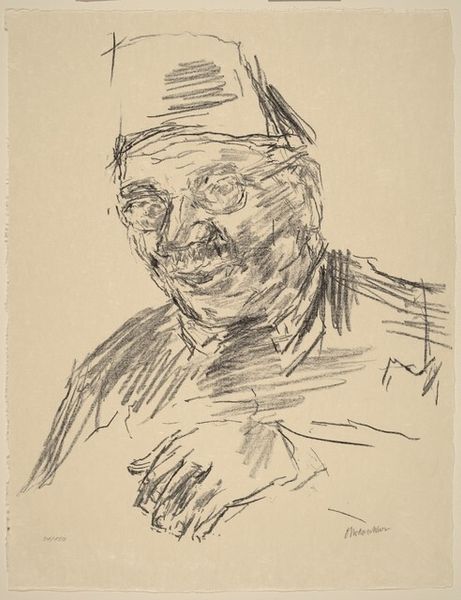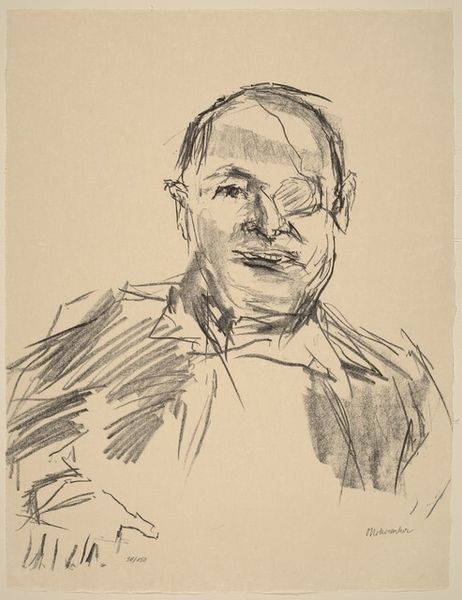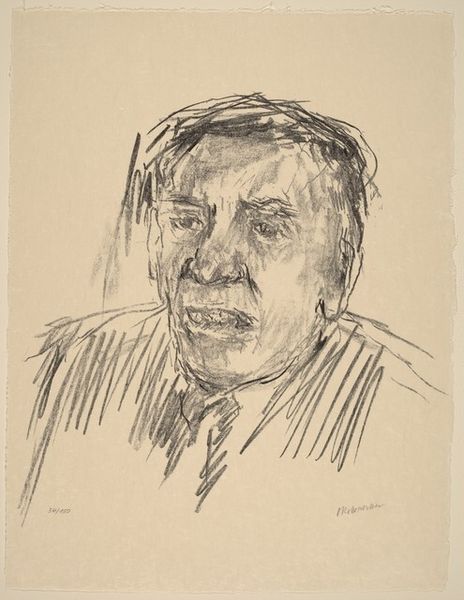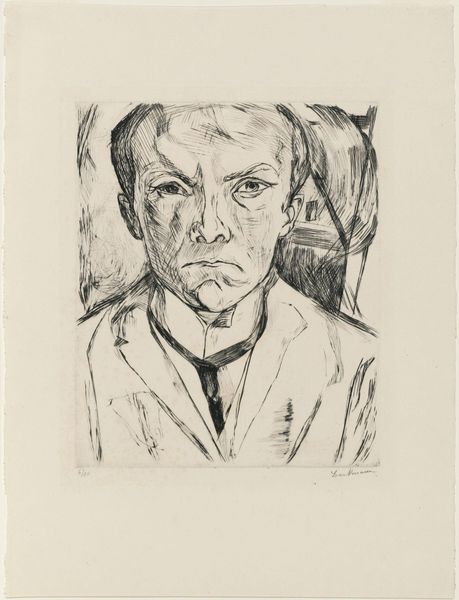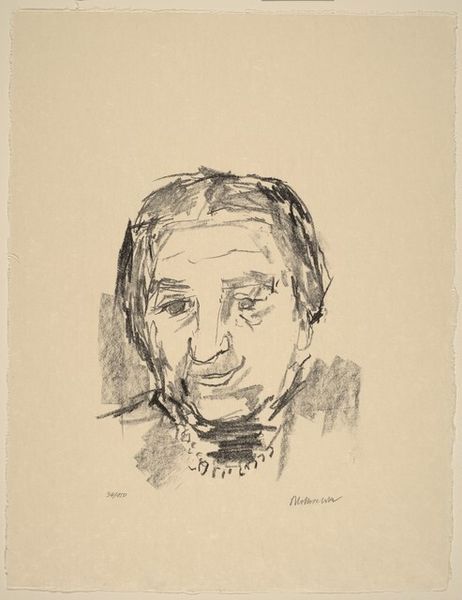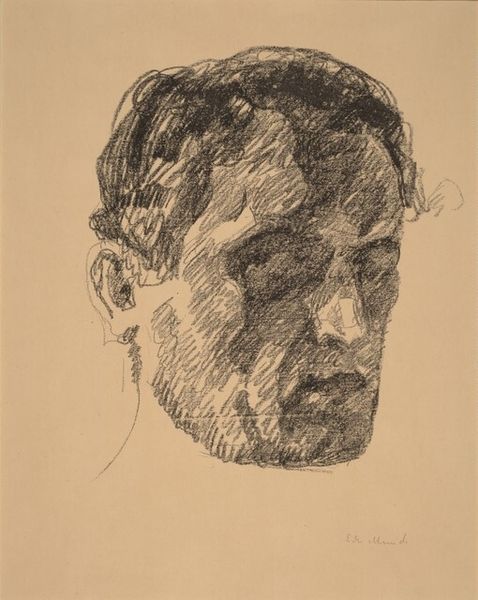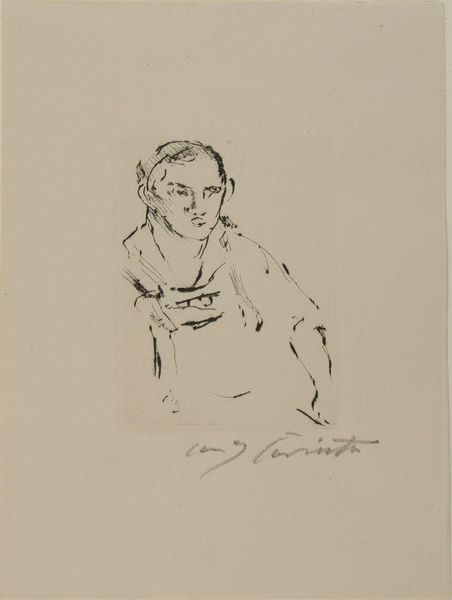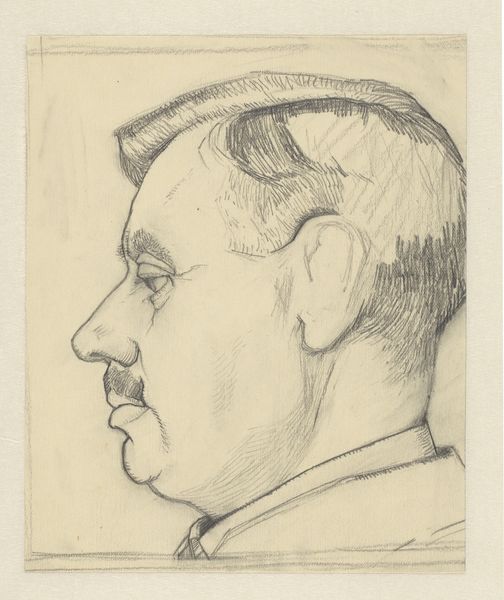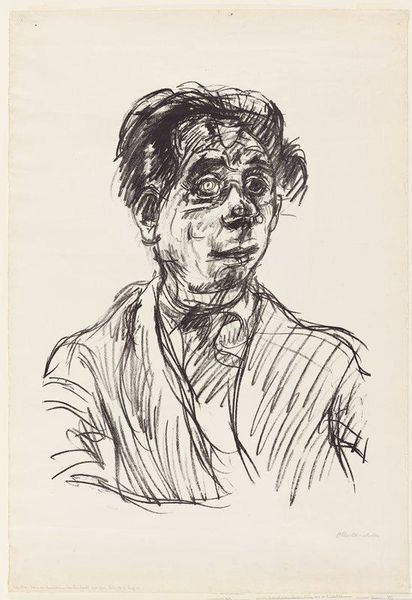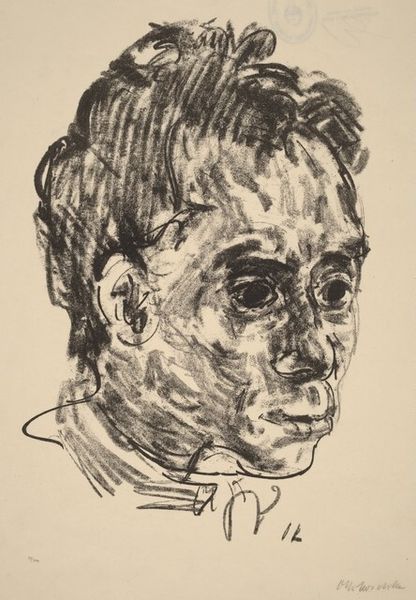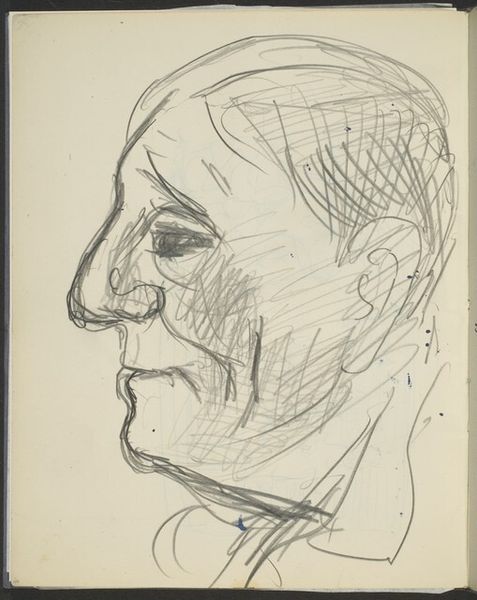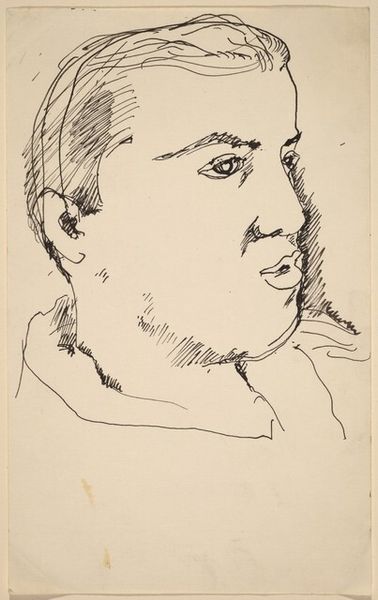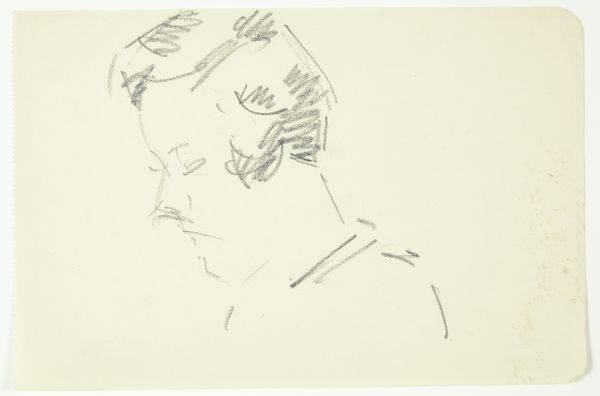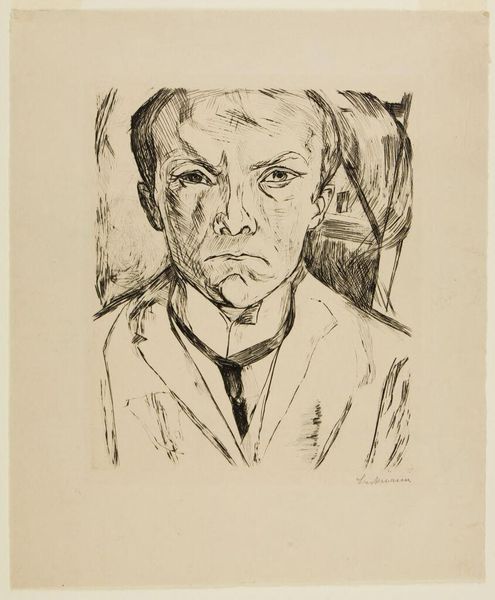
Copyright: National Gallery of Art: CC0 1.0
Editor: This is Oskar Kokoschka's "Teddy Kollek, Mayor of Jerusalem," a pencil drawing from 1973. It’s so raw and immediate, you can almost feel the artist's hand moving across the paper. What first strikes you about this portrait? Curator: The urgency, yes. It's as if Kokoschka is trying to capture not just Kollek’s likeness, but the very essence of his presence. Consider the deep lines around the eyes – symbols of experience, perhaps even the weight of responsibility he carried as mayor during turbulent times. Do you see how those lines converge, almost like radiating paths? Editor: Yes, they definitely pull your focus to his face, adding to the intensity. I’m also noticing the hair—it seems almost violently rendered, giving him a sense of dishevelment or maybe even intellectual chaos. Curator: Precisely. The hair acts as a visual crown of sorts, but an unruly one, which brings to mind ideas of civic leadership facing moments of intense change. Also, reflect on Jerusalem’s position as a central point in many faiths and political movements—could this hasty rendering reflect this era? Editor: That’s fascinating, thinking of his expression representing an anxious moment in the history of Jerusalem. So even in a seemingly simple sketch, Kokoschka embeds all these layers. It is very clear this seemingly simple drawing actually captures complex historical weight. Curator: Visual shorthand, indeed. Kokoschka’s masterful control suggests, as he put it, "the artist's task is to be a mirror of the world." Editor: It’s amazing how a single drawing can hold so much. Thanks, that really opened my eyes!
Comments
No comments
Be the first to comment and join the conversation on the ultimate creative platform.
